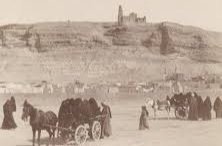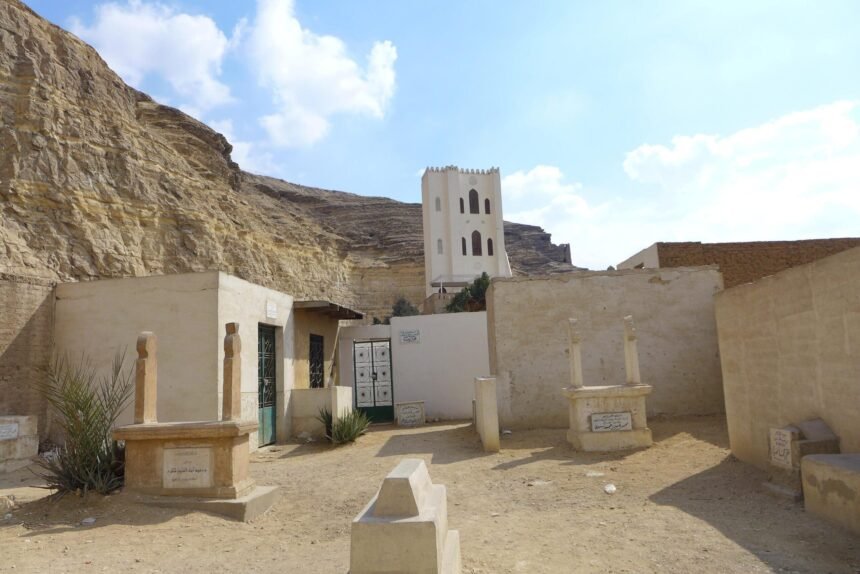Johannesburg: EgyPulse – News Desk
Tucked into the limestone cliffs of Muqattam Hill in Cairo, the Al-Luʾluʾa Mosque, literally “The Pearl”, is one of Egypt’s smallest and most enigmatic Islamic monuments. Built between 1015 and 1016 CE during the reign of Fatimid Caliph al-Hakim bi-Amr Allah, this compact structure defies grandeur with its quiet elegance and spiritual symbolism.
Unlike Cairo’s sprawling congregational mosques, Al-Luʾluʾa is a vertical, three-story structure carved directly into the rock. Its intimate scale and austere geometry reflect the Fatimid emphasis on esoteric meaning and architectural restraint. The mosque’s name evokes purity and rarity – qualities mirrored in its secluded location and minimalist design.
•Ground Floor: A barrel-vaulted prayer hall with a simple mihrab, carved into the rock itself.
•Second Floor: A more refined space with a decorated mihrab and a single rectangular window, allowing filtered light to enter.
•Top Floor: Divided into two rooms, each likely used for private prayer or contemplation, illuminated by narrow openings.
The mosque’s verticality and layered symbolism suggest a spiritual ascent – from earthly grounding to celestial reflection. Al-Luʾluʾa was part of a broader Fatimid vision to transform Muqattam Hill into a sacred landscape. The Fatimids, an Isma’ili Shia dynasty, were known for their intellectual rigor and mystical interpretations of Islamic architecture. This mosque, though modest in size, was a spiritual waypoint for pilgrims and scholars seeking divine insight beyond the city’s noise.

Its proximity to the now-lost Dar al-Ilm (House of Knowledge) and other Fatimid institutions underscores its role as both a religious and philosophical sanctuary. This mosque challenges conventional notions of Islamic architecture by proving that spiritual grandeur can reside in the smallest of spaces.






